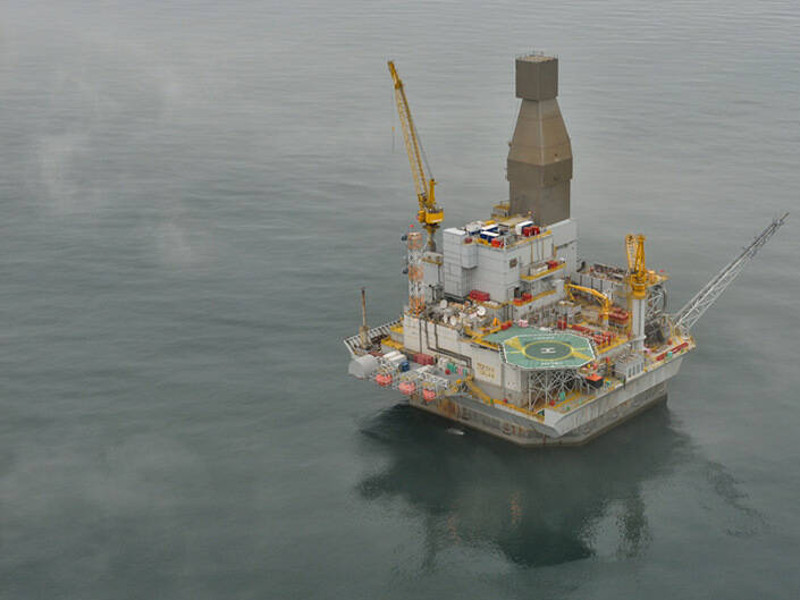 Sakhalin-1 oil and gas development project is located off the coast of Sakhalin Island in the Russian Far East (File photo)
Sakhalin-1 oil and gas development project is located off the coast of Sakhalin Island in the Russian Far East (File photo)
After Sakhalin-2, Moscow also plans to nationalise Sakhalin-1 oil and gas development project by ousting US and Japanese shareholders. But Moscow will make an exception for India so that OVL which holds 20% stake will remain & continue to work. Moscow grapevine is that while Rosneft will continue to hold controlling share, more Indian companies may be inducted to replace US & Japan and thereby also ensure a sales market in India.
The Sakhalin-1 is located off the coast of Sakhalin Island in the Russian Far East. It comprises three offshore fields — namely, Chayvo, Odoptu, and Arkutun-Dagi. Until recently, the Sakhalin-1 project was operated by a Russian subsidiary of the American major ExxonMobil known as Exxon Neftegaz, which owns 30% of the shares. In addition, 20% is owned by the Russian state, 30% by the Japanese company Sodeco, and 20% by the Indian ONGC Videsh. Whereas Sakhalin-2 specialises in the export of liquefied natural gas, Sakhalin-1 is in the export of Sokol oil.
The capacity of Sakhalin-1 is quite impressive. There was a time before OPEC+ set limits on production level, when Russia extracted as much as 400,000 barrels per day, but the recent production level has been about 220,000 barrels per day. The abrupt departure of the Americans following the US sanctions against Russia has caused the production to plummet to just 10,000 barrels. Russians hope that with the replacement by more Indian companies, the production level can be restored to the previous level. Indeed, the hope is that Indian ONGC Videsh will pull up the production level of Sakhalin-1 project relatively quickly by bringing in own technologies.
The overall trend of nationalising the holdings of American, British, Japanese and European capital in Russia’s strategic sectors of economy is crystallising as the new policy — the Russian version of India’s AatmaNirbhar Bharat (“Self-reliant India” campaign.) The cleansing of Russian economy, freed of Western capital, is expected to accelerate in the period ahead. India has seamless opportunities here to make investments and reap windfall profits. In strategic terms, India’s energy security will also be guaranteed for decades to come.
Moscow was well aware of the predatory character of Western capital in Russia’s oil sector — a legacy of the Boris Yeltsin era — but had to live with the exploitation as it didn’t want to antagonise other potential western investors. But that is history now. The souring of relations with the West to almost breaking point rids Moscow of such archaic inhibitions.
Indeed, the new policy to replace western capital from the commanding heights of Russian economy is not without risks, but Moscow is confident that it is on the right track and must do what it takes. Also, the decrease in production in the Sakhalin-1, unless addressed soon, may negatively affect the very characteristics of the oil fields in the Russian Far East, if the oil recovery factor decreases over time and a lot of oil is left to remain in the reservoirs.
The development of the fields had depended on Western equipment and technologies. Now Russia has lost both. On the other hand, the departure of the Americans will leave Russia with no easy route but to have its own technologies.
On balance, however, Americans stand to lose heavily too, as the production sharing arrangements dating back to the Yeltsin era had been forced out of Russian government when it was in dire economic straits during the transition from the Soviet period and was in no position to negotiate optimal deals. Come to think of it, something like 262 such so-called production sharing agreements (PSAs) were squeezed out of the Russian government by western oil companies by the time Yeltsin retired.
After coming to power in 1999, President Vladimir Putin set about the mammoth task of cleaning up the Aegean stables of Russia’s foreign collaboration in the oil sector. The “decolonisation” process was excruciatingly difficult, but Putin pulled it through and got rid of as many as 260 (out of 262) PSAs. In fact, Sakhalin-1 and Sakhalin-2 are the very last remaining two PSAs harking back to post-Soviet Russia’s decade of humiliation under Yeltsin.
Any surprises why the Biden Administration hates Putin so much and wants him out of power in Moscow?
Legend is that when the Soviet Communist Party Secretary Nikita Khrushchev paid his pathbreaking visit to India in 1955, then Prime Minister Nehru, amongst other “talking points”, referred to Soviet Union’s great reservoir of expertise in the oil sector, while complaining that the West refused help for anything in India’s state sector.
The folklore is that Khrushchev instinctively reacted in positive terms to Nehru’s request for help and no sooner than his return to Moscow, deputed a famous Soviet expert / geologist to India to prospect for oil — whose fame was such that he could apparently smell oil lying untapped deep in the bowels of the earth! Thus was born the ONGC in 1956, which is now heading for Sakhalin Island on a similar mission!
